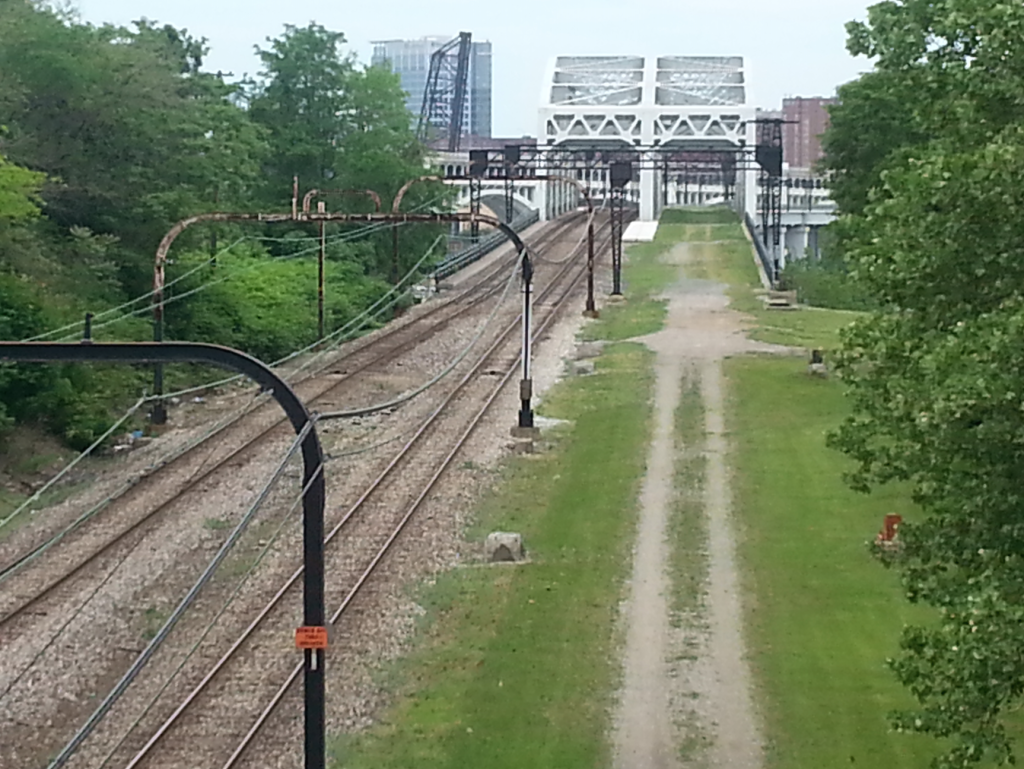
Greenway an investment in Cleveland's future
June 23, 2015
Greenway an investment in Cleveland's future
June 23, 2015

What do millennials want in a city? According to a City Lab report, there are a few key things: Good schools and parks, walkability and multiple transportation options.
With universities like Case Western Reserve and Cleveland State in our backyard and many of the Metroparks a short drive away, Cleveland should be a hub for young professionals. While it is true that our universities bring many young people to the city, Cleveland — and Ohio — still fall miserably short when it comes to providing a variety of public transit options.
One project, however, has the potential to both expand alternative transportation options and promote urban green space within Cleveland. The Rotary Club’s proposed Red Line Greenway hopes to be the much-needed catalyst towards a more walkable, equitable city. The proposed greenway, which would run along RTA’s Red Line rapid tracks (see photo), begins at the Zone Recreation Center at W. 65th Street and ends in downtown Cleveland at Superior Avenue and W. 9th Street. If completed as planned, the greenway could become a jewel for community members and tourists alike.
The proposed three-mile linear park would connect eight Cleveland neighborhoods and seven parks, giving residents easy, alternative access to Downtown. Not only would this help bring millennials to the city, but also for the 35 percent of Clevelanders without a car, a greenway could provide a reliable way to access many other neighborhoods quickly. A greenway within the city could also promote physical and mental health.
The Rotary Club has partnered with organizations such as RTA, the Cleveland Metroparks, LAND studio, and the Ohio Department of Transportation. The Rotary has broken the project into three phases. The first phase runs from W. 41st Street to the Cuyahoga Viaduct, and has already secured $2.08 million in federal money. Phase II and III, however, have not yet secured funding, and with an estimated total project cost of $13 million, it may be a while before Clevelanders get the green space they deserve.
Possible funding sources for the remainder of the project vary include federal grants, private donors, and even potential crowd funding. The state of Ohio could and should do MUCH to help, but past experience suggests they won’t.
While the Ohio Department of Transportation is technically a partner in the Redline project, ODOT typically does little to support Ohio’s public transportation system. Every year, for decades now, the state has spent billions of dollars on roads and highways, but next to nothing on public transit. In fact, in 2013 the state spent less than $1 per mile ridden on public transportation, while nearby states such as Indiana and Pennsylvania spent upwards of $4 per mile ridden.
The Ohio Department of Transportation should invest in alternative (and healthier) transportation like the Red Line Greenway. As trends in the behavior of the millennial generation and young professionals show, Ohio’s future depends on it.
Sophia is a Policy Matters intern
Tags
2015InternsSmart TransportationPhoto Gallery
1 of 22
